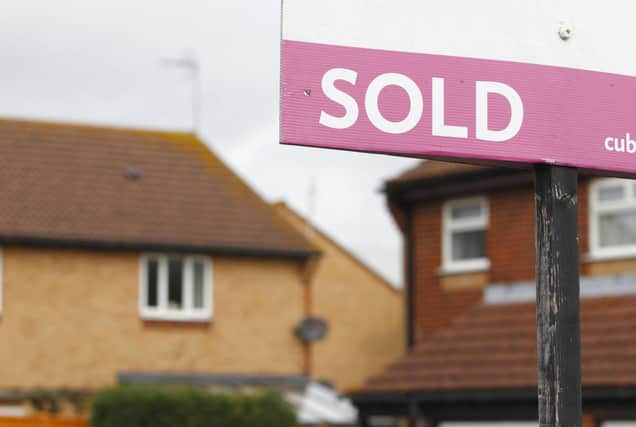What does future hold in property?


It may seem a minor fall, but UK rents fell by 0.01 per cent in November. That is significant because it is the first time in many years.
Rents fell slightly in November – the first time rental growth has entered negative territory in at least half a decade.
Advertisement
Hide AdAdvertisement
Hide AdThe average UK rent has now plateaued at a record £1,196 per month, up from £1,190 at the turn of year.
Removing London from the equation puts average rents at £759, up from £750 at the turn of the year, an extra £9 per calendar month or £109 per year.
The slowdown in rental growth has not been consistent across the country.
In the North West, the growth overall this year is 1.14 per cent – standing at an average of £618.24 per month.
Advertisement
Hide AdAdvertisement
Hide AdThe East Midlands , South West and East England experienced substantial growth in 2017 and are expected to climb further as we head into 2018. The North East has also seen rents grow at a faster rate in 2017 than at any other time in the past five years.
It is London that has seen the greatest reversal of rental growth, with November marking 18 months since rents in the capital first entered negative territory. The capital continues to be the main source of the UK’s slowdown, with rents falling in 26 of the 33 London boroughs.
John Goodall, CEO and founder of Landbay said: “Landlords have faced up to challenge after challenge over the past two years, from stricter regulation, reductions to tax relief, and a significant stamp duty tax hike when buying a buy to let property.
“One would expect this pressure to push up rents, but two key factors have allowed them to shoulder these rapidly rising costs: the Bank of England’s enduring Term Funding Scheme (TFS), which has injected a significant sum of cheap capital into banks, together with record low interest rates, which have also kept borrowing costs low.
Advertisement
Hide AdAdvertisement
Hide Ad“With interest rates now rising, and the TFS coming to an end in February, we expect upward rental pressure to be just around the corner. Without a radical house building plan for purchase as well as purpose-built rental properties, rental prices are in danger of soaring over the coming decades.”
Meanwhile, The North West’s housing market remains robust in the run up to Christmas, unlike many other areas of the UK, according to the November 2017 RICS (Royal Institution of Chartered Surveyors) UK Residential Market Survey.
In November, 17 per cent more respondents in the region reported an increase in new buyer enquiries, whilst in most other areas of the UK – including Yorkshire and Humber, the North East, Midlands and the capital, London – demand from would-be buyers fell last month.
Meanwhile, nine per cent of North West respondents also saw a rise in sales) in November, and 40 per cent reported an increase in prices too. In contrast, London continues to see the most negative sentiment for prices, with 54 per cent more contributors seeing a fall in prices rather than a rise. Alongside this, both the South East and East Anglia also reported negative price trends.
Advertisement
Hide AdAdvertisement
Hide AdHowever, the level of new instructions to sell in the North West further deteriorated in November, as the supply crisis continues. But, in part driven by the slower pace of sales, stock levels on estate agents’ books held broadly steady, with contributors in the North West reporting an average of 54 homes on their books during November.
Derek Coates of Venmores in Liverpool said: “Generally November was a quiet month, and perhaps the start of the seasonal slowdown.
“But of real concern, is the lack of properties coming onto the market, particularly as this shows no signs of improving.”